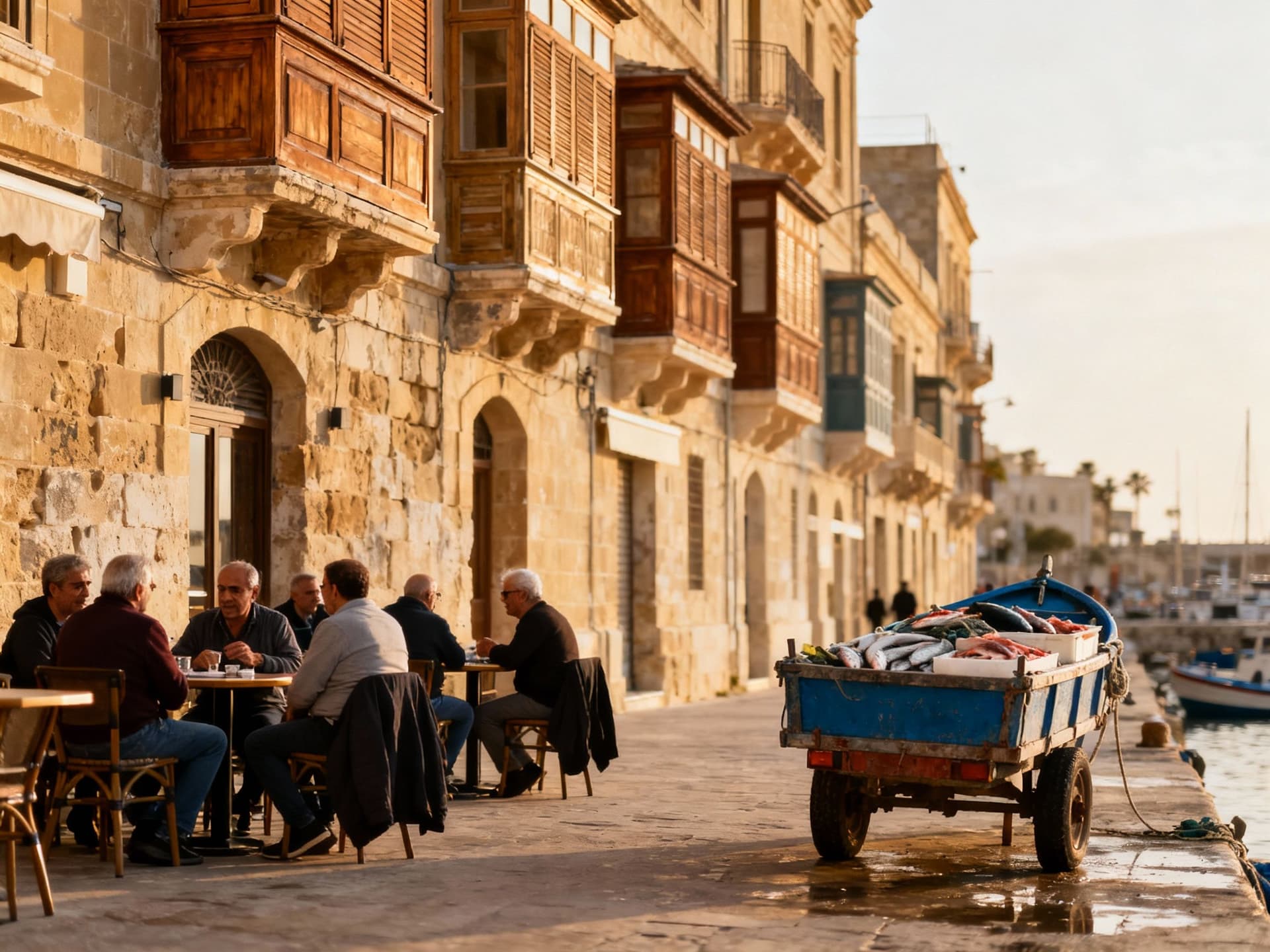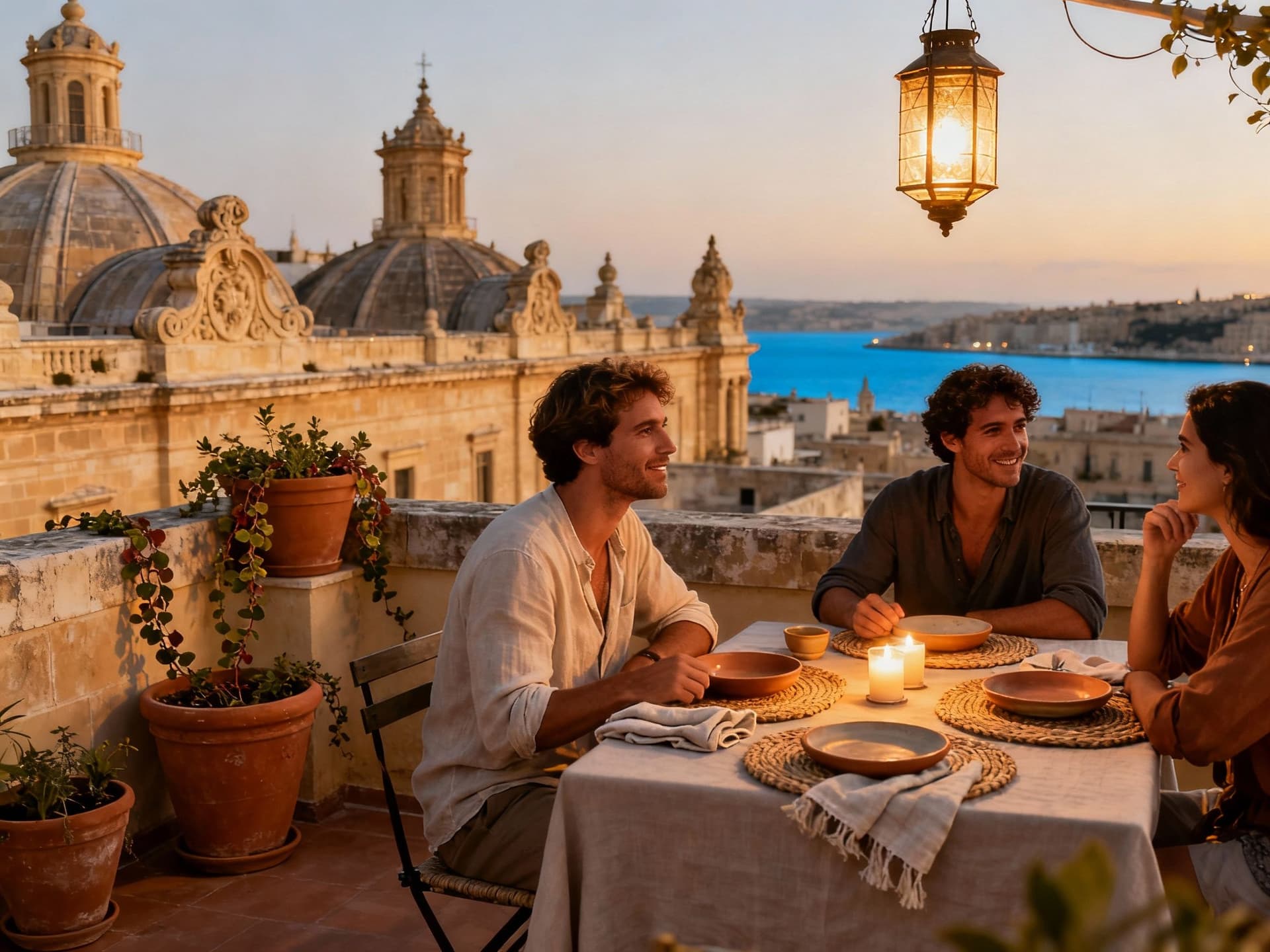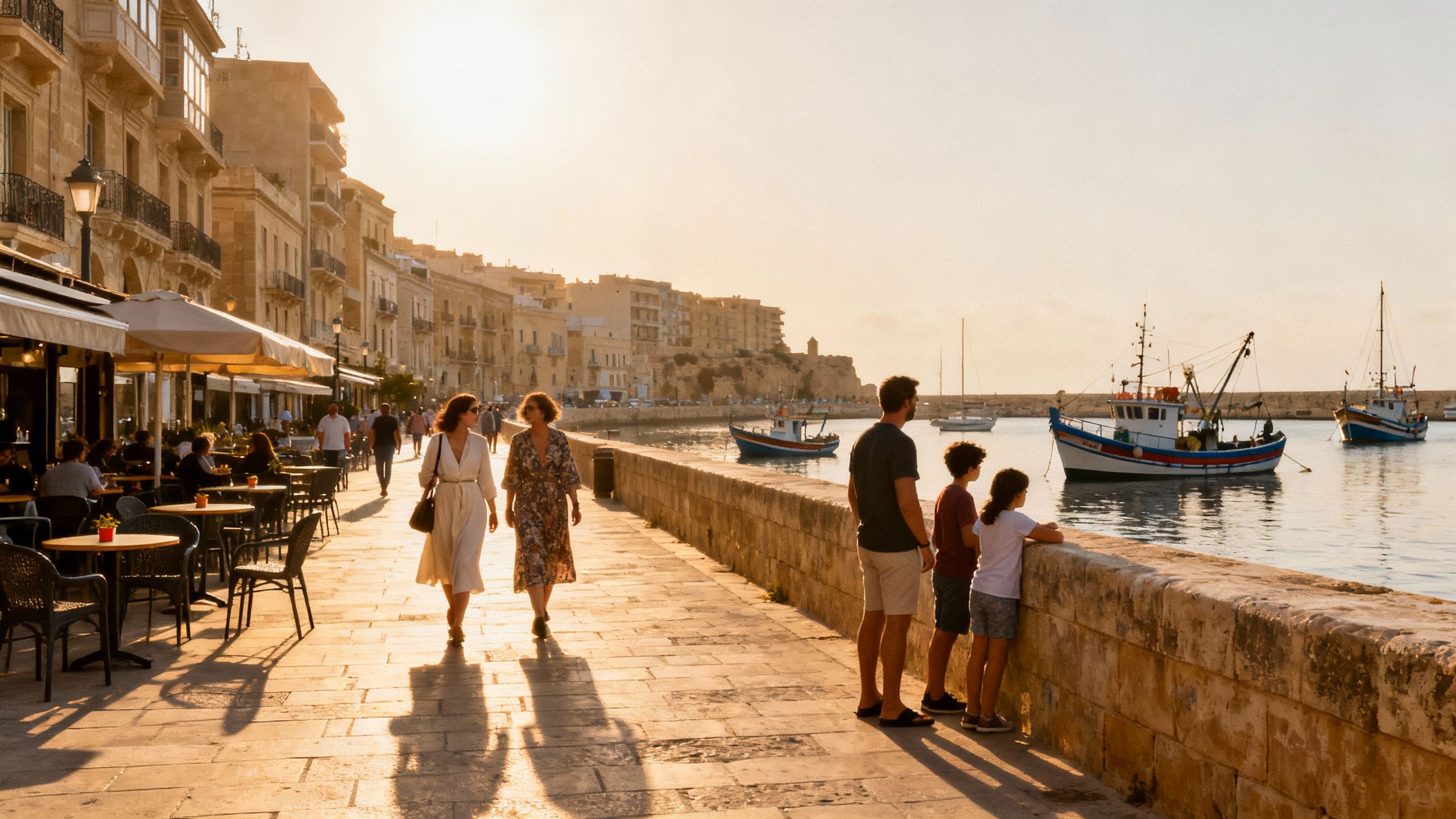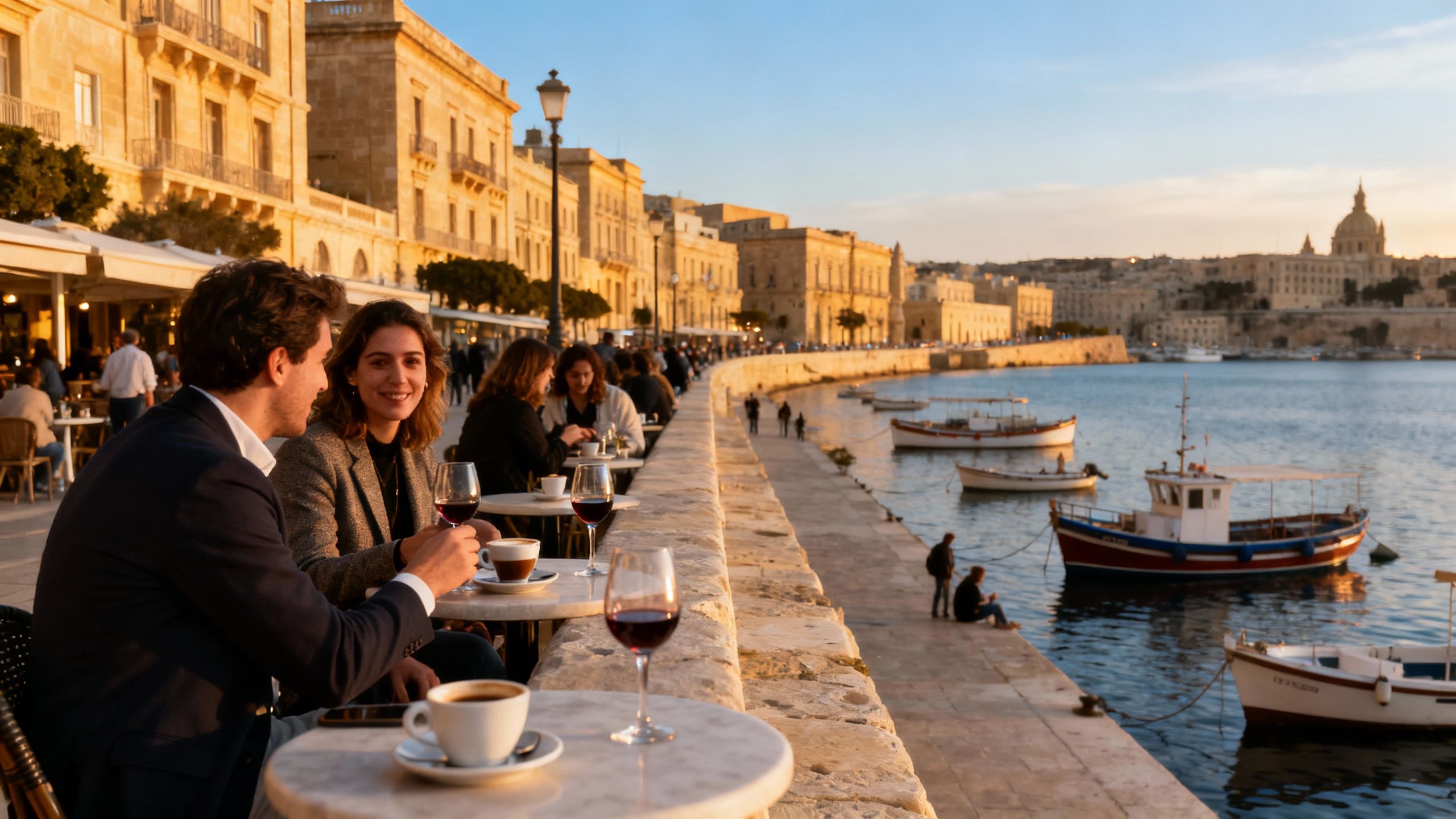Malta: Streets, Seasons and Smart Buying
Malta’s lifestyle — sunlit terraces, baroque streets, fisher markets — meets a market with steady price rises; choose streets, specialists and season-aware visits to buy wisely.
Imagine waking to the call of a bakery on Triq l-Imdina, walking past limestone façades warmed by morning light, and joining neighbours at a narrow café table where English and Maltese meet. Malta is compact enough that a seaside errand and a cultural afternoon are separated by a short ferry ride, and intimate enough that neighbourhood rituals — market morning on Marsaxlokk, aperitivo by Sliema front — shape daily life. For many international buyers the attraction is not merely climate or scenery but a lived-in continuity: historic streets that still host craftsmen, contemporary restaurants that respect seasonality, and houses that reward careful stewardship. Yet desire and market data diverge: recent statistics show steady price rises that alter where and how you should look.
Living Maltese Days: rhythm, neighbourhoods and light

Daily life in Malta is shaped by scale and season. Summers are built around the sea — harbours fill with small boats, rooftops are used as rooms in their own right, and towns loosen into long evenings of music and conversation. Winters are quieter and intensely local: village fêtes, closed-door restaurants serving slow-cooked stews, and an architectural language that makes stone houses comfortable with modest heating. For a buyer this matters: a terrace in St Julian’s is a summer room; a well-insulated townhouse in Mdina becomes a year-round refuge.
Sliema & St Julian’s: seaside energy and contemporary conveniences
Sliema and St Julian’s present an almost urban Mediterranean tempo: promenades lined with cafés, pedestrian steps down to rocky bathing spots, and a steady supply of modern apartments with sea views. They suit buyers seeking social life, proximity to international services, and immediate rental demand. Streets such as Tower Road in Sliema or Spinola Bay in St Julian’s show how contemporary interventions sit beside Victorian and Art Nouveau details, a combination that supports both lifestyle and liquidity for investors.
Mdina & Valletta: history as daily backdrop
Valletta’s baroque facades and Mdina’s walled quiet offer a different rhythm — mornings that begin with cathedral bells and afternoons defined by narrow lanes that collect light. Properties here are often restoration projects: timber balconies, stone stairs, and traditional Maltese tiles demand artisan attention but repay owners with provenance and enduring character. For buyers who value architectural pedigree, these areas are compelling, though they bring unique maintenance considerations.
- Lifestyle highlights: an illustrative list
- Morning espresso by Spinola Bay; weekend fish market at Marsaxlokk; an evening passeggiata on Sliema promenade; rooftop dinners under paper lanterns in Valletta; cliffside swims at Golden Bay; weekly community festas in village squares.
Making the move: property realities behind the romance

Price momentum matters. The National Statistics Office reported an RPPI increase of 5.6 per cent year‑on‑year in Q2 2025, reflecting steady demand across apartments and maisonettes. Simultaneously, changes to residency and citizenship routes — including legal rulings that have altered previous investment-based programmes — have shifted buyer motivations from passport-seeking transactions to lifestyle and long-term stewardship. Put simply: the market now rewards careful selection and local knowledge more than transactional speed.
Property types that suit how you want to live
Apartments and modern blocks deliver immediate convenience: lifts, parking, and proximity to services. Maisonettes — often with a ground-floor entrance and private roof terraces — are quintessentially Maltese and provide year-round outdoor living. Period townhouses in Valletta or Vittoriosa carry historic detail and require specialist restoration; they appeal to buyers who view property as cultural stewardship rather than a short-term asset. Consider how you want to use a kitchen, terrace, or roofroom before letting price alone guide you.
Working with local experts who know place and practice
A practical, lifestyle-minded checklist when engaging agents and specialists:
- Commission local agencies with knowledge of listed streets, planning constraints, and artisan trades; insist on references for conservation projects.
- Visit at least twice across seasons — a summer week and a winter weekend — to sense how public life, noise and occupancy change.
- Ask for a history of the building: prior works, lead-in times for permits, and evidence of structural surveys.
- Budget for artisan repairs (timber balconies, lime plaster, terrazzo floors) rather than assuming modern finishes will suffice.
Insider knowledge: what expats wish they'd known
Expats commonly describe two surprises: first, the persistence of community rituals that determine where life is lived; second, that administrative changes — particularly around residency and citizenship — alter the buyer profile and, by extension, neighbourhood character. High demand in central pockets has increased prices, while quieter villages retain authenticity but require patience when sourcing services. Recognising these dynamics early will shape both your budget and your chosen street.
Language, integration and social fabric
English is an official language, which eases practical integration, but Maltese remains central to social life and village ritual. Participation matters: attending festas, learning a few phrases, and using local tradesmen establishes trust and access to the best artisans. For property owners, this social capital translates into better local recommendations, earlier sight of off-market opportunities, and smoother restoration projects.
The long view: how life and value evolve
Malta rewards stewardship. Well-executed restorations and thoughtful inserts — sympathetic double-glazing, discreet insulation, and repaired timber balconies — preserve historic character while improving comfort and marketability. Over a decade, provenance and condition often outpace speculative new build premiums in perceived value. If you intend to pass the property on, prioritize materials, documented works, and a clear maintenance plan.
- Red flags and practical cautions to note
- Unverified subsurface drainage history; missing planning consents for roof extensions; ill-documented renovations; signs of rising damp where salt exposure is high; offers that pressure immediate exchange without local legal counsel.
Picture yourself six months after the move: shopping at Bondi’s bakery in Sliema, hosting friends on a roof terrace looking east to the Maltese sunrise, and knowing the names of three local artisans who will care for your home. For many international buyers the true purchase is membership in a compact civic life where loyalty, craftsmanship and history confer quiet privileges. To reach that point with confidence, align a lifestyle brief with an agent versed in local streets, enlist legal counsel and conservation trades, and visit outside the high season to verify the daily rhythm.
If you are ready to explore, start with a concise brief: the lifestyle elements you cannot compromise on, a two-season visit plan, and a shortlist of neighbourhoods (Sliema, St Julian’s, Valletta, Mdina, Marsaxlokk). Work with an agency that can show documented restoration projects and advise on the effects of recent policy shifts on buyer profiles. The reward, beyond capital metrics, is a house that feels inevitable — a place where the city’s light, language and rituals become yours.
Dutch former researcher who moved to Lisbon, specialising in investment strategy, heritage preservation, and cross-border portfolio stewardship.


